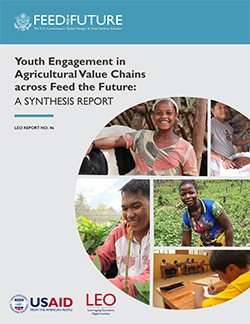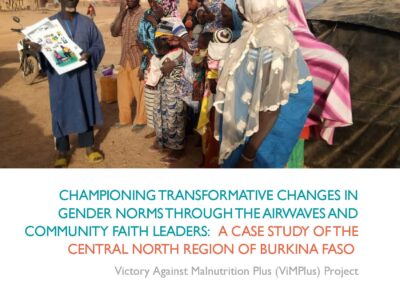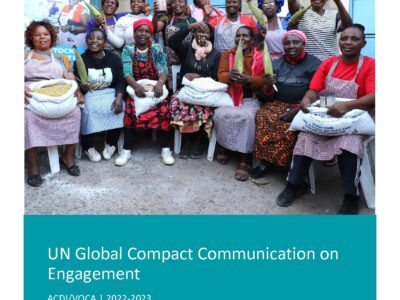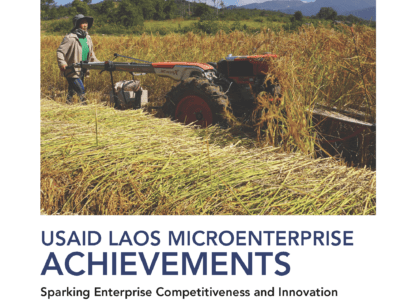
EXECUTIVE SUMMARY
As global youth populations and unemployment swell to unprecedented levels, it is comforting to imagine the development of a stable, secure, and diversified rural economy powered by youth, with trade and services industries growing alongside the traditional agricultural sector. This vision has been gaining traction in the global development agenda. Much emphasis has been placed on what rural youth do and do not want to do and what meets their needs. So far, however, there is little information on what specific agriculture value chain activities have the capacity to absorb youth and transform their futures, and even less on how to effectively mainstream youth aged 15–24 as mandated in the USAID Youth in Development Policy (2012).
This report aims to inform Feed the Future (FTF) efforts moving forward to more strategically and deliberately engage youth in market systems by providing insights from current FTF country programs. Commissioned by USAID’s Bureau for Food Security/Office of Country Strategy and Implementation, a research team with the Leveraging Economic Opportunities (LEO) 1 activity scanned all 19 FTF countries and analyzed four FTF country programs in more depth through site visits to Guatemala, Liberia, Nepal, and Uganda. 2 These countries were chosen based on 1) their relatively high youth involvement in the portfolio; 2) youth mention in Country Development Cooperation Strategies (CDCS) and FTF strategy documents; and 3) geographic diversity. Case studies and success stories from these countries accompany this report and cover the following themes: Uganda – Adaptive Program Models; Guatemala – Engaging Rural Youth through Experiential Education; Liberia – Building Youth Resilience in Weak Market Systems; and Nepal – Household Approach to Reaching Youth.





